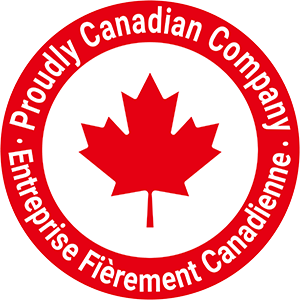How Does Assessing Candidates for A Job Help Your Organization?
I Finding the right fit for your workplace culture has become a significant consideration for most organizations. The practice of a job fit assessment is imperative for choose the right people.
Finding a candidate that is a good fit for the job is important. If you don’t find the right fit, they may become disinterested and their performance will not be satisfactory. If a person is bored, they will likely look for employment elsewhere. If the candidate does not fit in with the culture, they are also likely to seek other opportunities that match with them better.
In today’s world, people are looking for a workplace that aligns with their skills, drive, morals, and ambition, and less importantly is the salary. This is why organizations are asking candidates to take the job fit assessment test (behavioural assessment), which will determine if the candidate’s requirements work with the business needs and environment.
This article will help you understand job fit, and how you can conduct job fit assessments to have better hiring successes.
Job Fit – What Is It?
Job fit is the process of assessing whether a potential candidate is a good match for a particular role based on their skillset, experience, and workplace requirements. It studies what is needed for each role, work culture, and company ethics and determines if applicants are a good fit.
Using job fit will determine not only if a candidate has the qualifications for the job, but how well they will get along with their colleagues, which will help motivate them. This results in higher productivity. The main reason for this strategy is that even if someone has relevant skills for the job, if they are not able to develop positive connections with the people they work with, they are more likely to struggle.
Since job fit measures such a variety of factors, there are many details that contribute to a decision about who the best candidate is for the job. We are able to look at how some personal attributes can indicate whether or not a person will be satisfied at work if they are hired for a particular role. There are other predictive factors, such as an applicant’s attitude that determine if they are a better fit for another role.
What is the hard part of assessing work preferences and job fit? Ensuring that you have all the significant details about your candidate so that you can compare them against pertinent job requirements before you hire them.
Why Is Job Fit So Important?
When assessing candidates for a job, it is important that they have the skills to do the job they are applying for. Job fit is vital for finding a perfect match by looking at the skills the candidate brings, as well as their relative experience, and ambition levels.
A job fit assessment test can determine likely productivity levels, engagement, and how satisfied a person will be if they are given the job. Doing this can help reduce turnover rates and increase retention levels. If your business does not ask job fit interview questions, you risk hiring people that are likely to be less satisfied and content at work, making them more likely to seek employment elsewhere.
What Are The Best Questions To Assess Job Fit?
1. How Can I Know Exactly What Is Needed To Fill The Position?
The first thing you need to know when creating a job fit plan is to create a detailed description of exactly what you want out of the ideal candidate for the open position.
You will need to review exactly what is needed for success in the role, including relevant skills and job responsibilities. Analyzing the job requires finding the answers to questions such as:
- What are the daily tasks of the job you are reviewing?
- What are the target objectives and KPIs for this position?
- What type of skillset and experience does a person need to be successful in this job?
- What type of career growth is stemmed from this position?
By analyzing job positions, you will learn exactly what the role does and what a perfect candidate would be like. As well, it gives you the opportunity to determine the exact job fit interview questions you will want to ask when selecting candidates.
2. Who Can Help Describe The Best Fit For A Position?
When you run your analysis, find out from your current colleagues what a new employee would require to be successful in the role, and in the culture.
The people who know the most about the position you are trying to fill are the people who currently work that role. A great way to get a better understanding of your employees is by asking them about their struggles, their ambitions, and how their team functions. Start by asking questions like:
- Can your skills be used better?
- Does your role live up to the expectations you have for it, and what are those expectations?
- Does the current work environment allow you to achieve your goals? If not, what can be improved?
Using the answers to the previous questions to develop the perfect job posting that honestly details the required tasks, what skills the ideal candidate needs to have, as well as secondary skills that would be a great addition. By being transparent in your hiring advert, you will have better success in finding the perfect match because they will already know what is expected of them.
3. Are There Pre-Employment Assessments I Should Be Using?
Besides the interview, pre-employment testing is a great way to determine work preferences and job fit.
The reason why many organizations have been using pre-employment assessments is because they are proven to work.
By using these assessments, talent professionals are able to understand how candidates think and problem solve. Let’s say you need a candidate that has excellent critical thinking skills, you can test their cognitive abilities, with heavy logic and reasoning questions. Doing this will allow you to determine if they meet the job qualifications before taking the next step in the hiring process.
Another hiring tool that can be beneficial is situational judgement testing (SJT). Conducting these tests allows you to determine how they would handle certain workplace scenarios. Presenting them with these situations and a variety of outcomes they can take to solve the issue, allows you to see how may behave if they are given the job.
This way of testing candidates not only makes things clear to you, but also to the candidate. It gives them the opportunity to imagine themselves in the role and if they feel it will be a good fit. It allows the applicant to determine if they want to continue with the hiring process themselves.
4. How Can You Make Sure That Your Interview Process Is Good?
The best way to assess job fit is to hold interviews. When designing job fit interview questions, it is important to think back to the job analysis results and use that information.
When assessing candidates for a job, the interview should be mixed with common and situational questions that connect with the actual job that’s being hired for. It is also important to ask job fit interview questions related to the ideal work environment that interests the candidate.
Another feature that can be added to your interview process is to have the candidate complete a task that is commonly required of the desired role. There is no better way to discover a candidate’s work preferences job fit, than by testing their ability in the role itself.
It is important that this hands-on task and the accompanying responsibilities are honestly portrayed, and is conducted further along in the hiring process.
Remember that in the current landscape that we’re living in, it is not always a possibility to meet in person. Your organization will need to have a clear actionable plan for holding remote interviews where you can still measure job fit.
5. How Can I Assess The Motivation Of A Candidate?
When conducting a job fit assessment test, the motivation factor is one of the most important to measure.
Finding someone who is motivated to do the job will help to reduce their boredom levels, and at the same time the risk of losing that employee to a larger salary will be less likely. On that topic, it is important to know if a large salary is a motivating factor to an interested applicant.
The best way to find out that answer is to ask them the following question: What motivated you to apply for this career opportunity?
Once you have that answer, you can go even further with it. Find out what their ideal daily responsibilities would entail, should you hire them. Ask about their work values, if they have flexible working hours, how they get along with others, and if they can work well in a team. By asking more questions about what motivates the candidate, you will discover how well they may fit in with their team, and how happy they will be if they are given the position.
6. How Can I Ensure Long-Term Hires?
More often than not, applicants already know where they want to grow within the organization. If they do not see themselves moving up in the company over time, it will be difficult to persuade them to take the job.
You will have to think about if the candidate will be successful and happy doing the job over many years. What will happen if their tasks need to change? Does your organization have the human resources to help find them another role that suits their skills? After you figure that out, ask the candidate questions that would get them to discuss what they are hoping to get out of the role. If you want to find out what their long-term objectives are, ask them exactly that!
It is vital to find out what a candidate’s goals are because it helps you understand where they see themselves within the company. It can also let you see if they would be a good fit with the work environment and culture. Be mindful of candidates that may want this job so that they can get their foot in the door, just so that they can position themselves for something better, as they likely will not be fully committed to the work. Being able to determine when assessing candidates for a job who will help your business not waste time and money on someone who will not be a long-term, committed employee.
7. How Can I Select Candidates Who’s Organizational Fit and Job Fit Work Seamlessly Together?
When hiring, you just need to remember that you do not have to choose between organizational fit or job fit – you can have both.
Every recruiter strives to select candidates that fit both. Remember, when you are creating your plan for hiring that you have elements of both factors, so that you can make the best choice when it comes to offering the job. Conducting job fit assessment tests along side organizational fit assessments will give you the answers you need to make a hiring decision and if they align with the existing culture and team members.
Finding someone that matches your organizational fit is increasingly important when it comes to filling managerial positions. One of the leading reasons an employee leaves an organization is issues with the management.
Managers have a huge impact on whether or not employees will stay at a company. You could offer an employee a high salary and great opportunities, but if they are not satisfied with management, they are likely to seek employment elsewhere.
It is vital for talent professionals to assess the soft skills of candidates applying for managerial positions. Soft skills include a person’s attitude, personality, work ethics, and communication skills. If you hire someone to be a manager, it is important that they have the people skills to work with the existing team, because if not, you may lose employees that clash with that leader. Having a balanced managerial leader will reflect on the rest of the team.
8. How Can You Make Job Fit Assessment Benefit The Candidate And Your Business?
Asking job fit interview questions not only gives you the information you need to determine if someone is a good fit, it also benefits the candidate in the same way. It allows the candidate to find out if the role and the work environment are suitable for their needs.
Making changes to your job postings is one of the best ways to get the results you want from applicants. The skills required for the position are important, but don’t forget to include a description about the daily and overall responsibilities. You can even include a description of everything that would be expected of the candidate on a given day. By revealing these details in the job description, it helps screen out people who are not interested in the position.
Another way that daily life can be presented to candidates is by filming the current employee doing the job. If that is not possible, you can have the candidate do a situational judgement test. Both options allow for applicants to imagine themselves in the role and if they find it to be a good match.
Also, be sure to allow time for the candidates to ask their questions about the job. You can have them speak with potential colleagues so that they can ask questions and you both get a sense of their job fit.
It’s Time To Put Your Knowledge To The Test
You now have all the information you need to find a successful recruit. Remember to be honest and open about the job and its tasks at each step of the hiring process, so that those interested can get a real sense of what the position requires of them.
Understanding how each job works and what is required to be successful at it allows you to get better results from a job fit assessment test.
Knowing if a candidate is a good fit for your team means asking more about them than just their skillset. Planning exactly what job fit interview questions you will want to ask, as well as seeing what they are like by testing them in the desired role, you will get a better sense of their job fit. Pre-employment assessments can also be helpful in determining job fit. Most importantly, finding a match that balances work skills with personal skills, as well as what motivates them will help you find someone that has similar values as your organization.
Everything that you put into designing the job fit assessment will help your business be more successful. When the time comes to actually hire someone, you know that your selection will be the best fit for the job, making them more likely to be effective workers and keen team players that will stick with the company longer.
Related Blogs
Layoffs vs. Furloughs: What’s the Difference and Which Is Better for Employers?
Layoffs vs. Furloughs: What's the Difference and Which Is Better for Employers? Economic uncertainty, market shifts, and rapid organizational change force leaders to make difficult workforce decisions. One of the most common challenges leaders face
5 Types of Communication Styles and How to Use Them Effectively
The 5 Communication Styles and How to Use Them Effectively Communication is the foundation of every successful business interaction, whether you are leading a strategic planning session, managing change, coaching a team member, or sharing
Average Typing Speed (WPM): What’s Good, What’s Fast and How to Improve
Average Typing Speed (WPM): What’s Good, What’s Fast, and How to Improve Whether you’re a student, professional, or casual computer user, typing efficiently can save you countless hours each year. But how do you know



